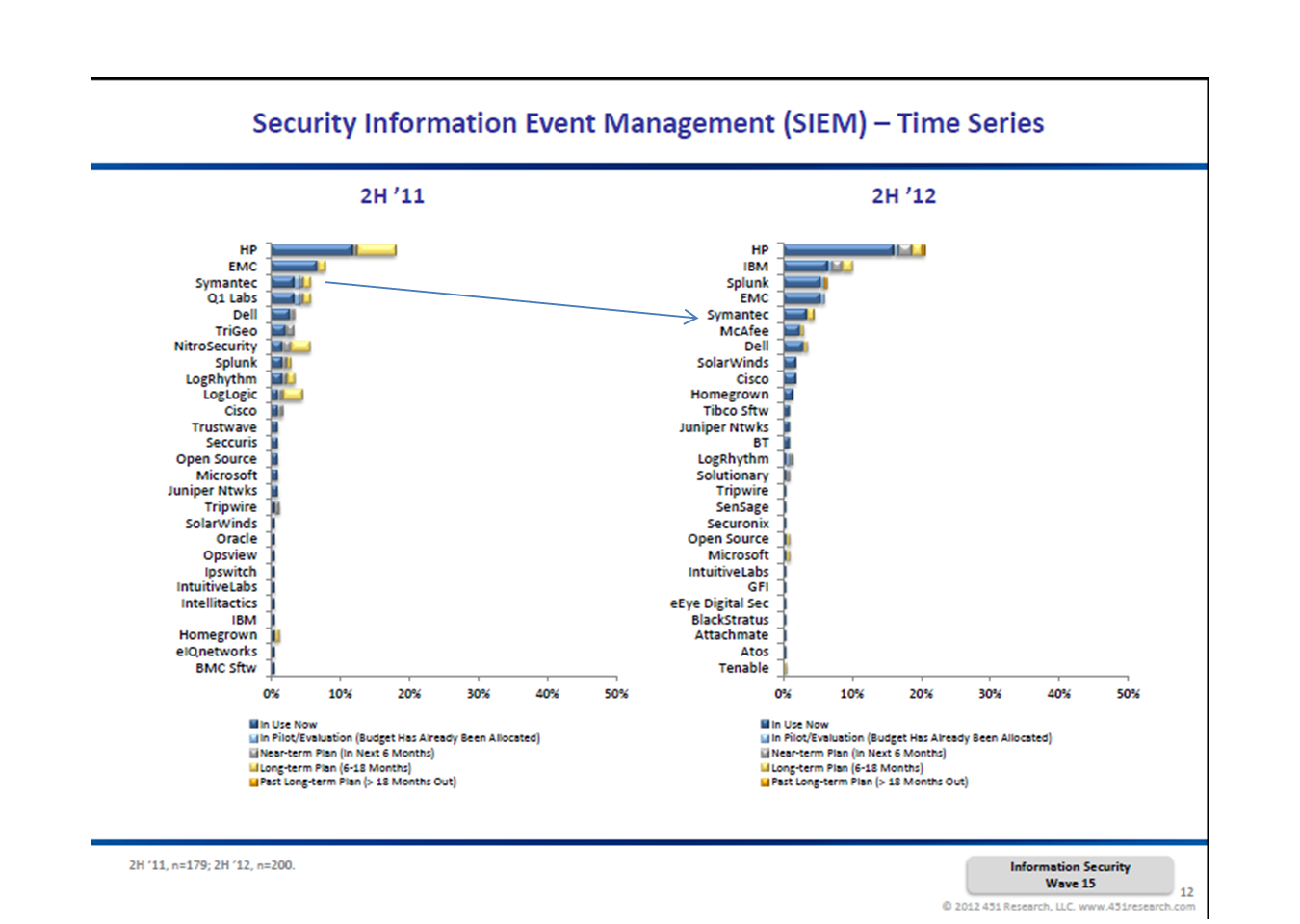Contact: Scott Denne
Over the past year, Juniper Networks shaved $111m of revenue – or 16% – off its security business, capping a three-year period that has seen that unit decline 25%. Unless it makes a move to offer more up-to-date products, there’s little reason to expect the division to stop shrinking. According to a survey by TheInfoPro, a service of 451 Research, the same amount of Juniper’s security customers said they plan to spend less with the vendor as said they would spend more (22%). Compare that with 2013, when only 11% planned to spend less and 44% planned to spend more.
Juniper’s security portfolio consists of network perimeter defenses (firewalls, VPN, intrusion prevention, etc.) and has been slow to adopt emerging technologies, such as next-generation firewalls. The founders of Palo Alto Networks, which pioneered next-gen firewalls, initially wanted to build the company at Juniper; however, they left and now Palo Alto is a quarter or two away from being larger than Juniper’s security business.
Meanwhile, Juniper spends conservatively on M&A – it hasn’t spent more than $300m on a deal in almost nine years and has only crested $100m three times since then – so we don’t expect it to make a big, splashy Sourcefire-like acquisition. Even so, the flood of venture money going to security creates an abundance of targets that match its spending profile.
Cloud application control technologies would make a good fit with Juniper. There are several startups in this space, including Adallom, Netskope and Skyhigh Networks, that are developing technologies that promise more nuanced control of SaaS apps compared with what next-gen firewalls typically offer today. As the services are offered, in part, through a network-based appliance, they would fit Juniper’s product portfolio. We expect Juniper’s competitors to get in this game in a year or so, making it possible that Juniper would try to regain some ground with a move in this market.
On the other hand, Juniper’s overall business is healthy: revenue grew 7% last year to $4.67bn, with a $439m profit on the strength of its router sales. With new CEO Shaygan Kheradpir, who’s been on the job for about a month, management may decide that it’s not worth the trouble to keep its promise to return the security division to growth this year. While it’s too early to say what moves he’ll make, his resume as the COO and CTO of Barclays and before that, CTO and CIO of Verizon, which accounted for 10% of Juniper’s revenue in several recent quarters, suggests that Kheradpir was brought in to protect the company’s existing relationships, rather than expand into new markets.
For more real-time information on tech M&A, follow us on Twitter @451TechMnA.


